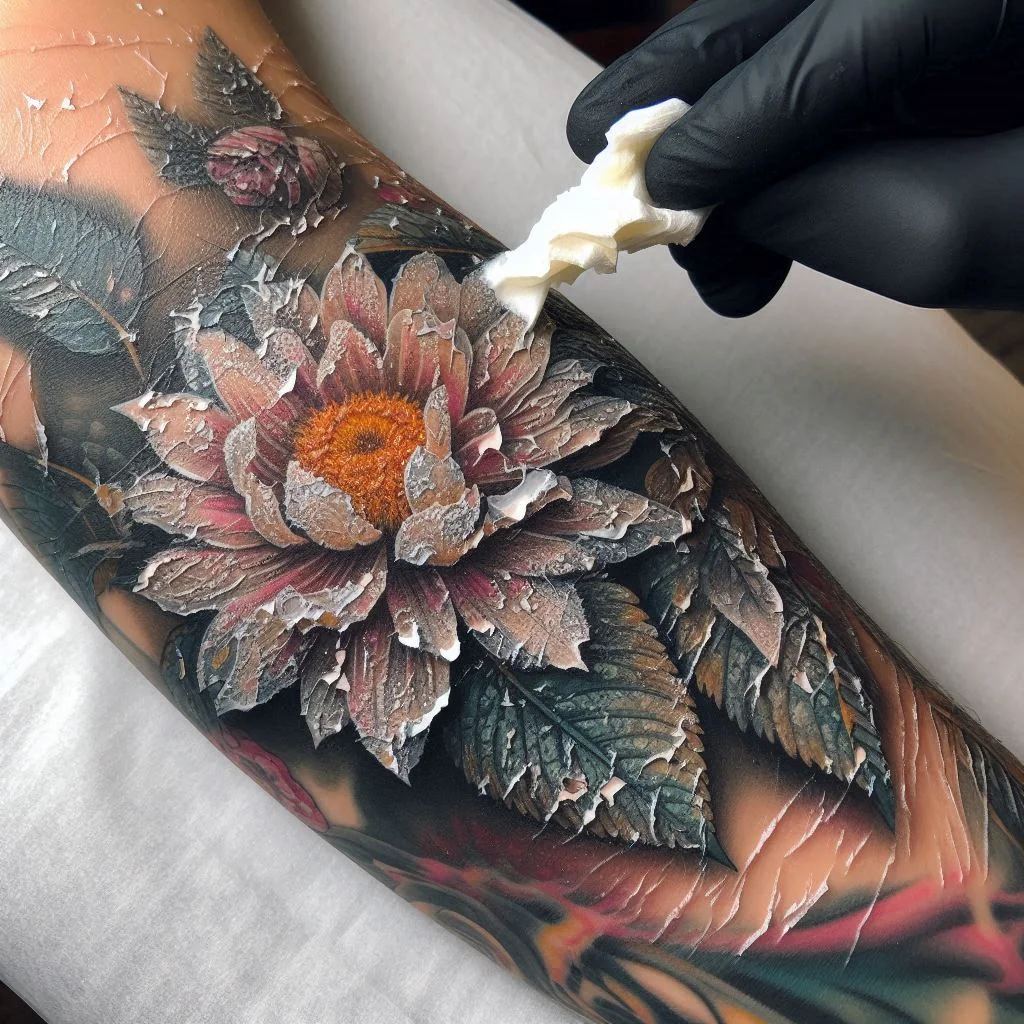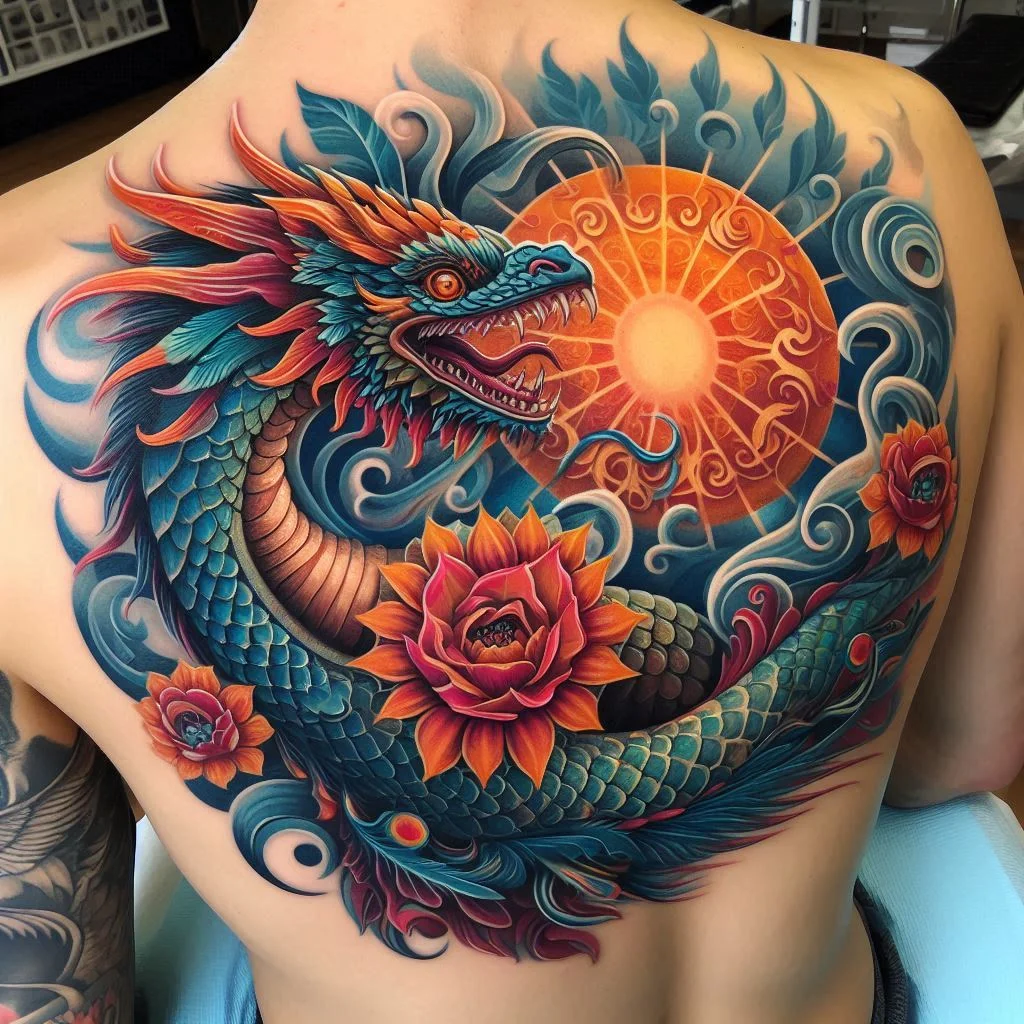How Long Does a Tattoo Take to Heal?
If you’ve just gotten a tattoo or are planning to, you’re probably wondering: how long does a tattoo take to heal? The short answer is that tattoos usually take two to four weeks to heal on the surface. However, the deeper layers of skin take three to six months to fully recover.
The healing time can vary depending on:
Tattoo size – Larger tattoos take longer to heal.
Ink color – Certain pigments, like red, may cause irritation.
Placement – Areas with more friction (like hands or feet) may take longer to heal.
Your skin type – If you have sensitive skin or allergies, healing may be slower.
Proper tattoo session preparation and aftercare play a huge role in how well your tattoo heals. In this guide, we’ll break down the complete tattoo healing timeline and how to care for your new ink properly.

What Are the Stages of Tattoo Healing?
Tattoos go through four main healing stages. Understanding each stage will help you recognize what’s normal and what might be a sign of infection or complications.
Stage 1: Inflammation & Oozing (Days 1-7)
Right after your tattoo session, your skin will be red, swollen, and sore. This is completely normal since tattooing creates an open wound by puncturing the skin with tiny needles. You may also notice:
- Oozing of ink, plasma, and blood – This helps your body start healing.
- Warmth and tenderness – Your immune system is responding to the trauma.
- Mild swelling – Your body is increasing blood flow to the area.
How to care for your tattoo during this stage:
- Keep the bandage on for a few hours after your session.
- Wash your tattoo gently with lukewarm water and fragrance-free soap.
- Pat dry and apply a thin layer of antibiotic ointment.
- Avoid tight clothing that may rub against the tattoo.
Stage 2: Itching & Flaking (Days 7-14)
At this point, your tattoo will start to itch like crazy—but don’t scratch it! Your skin is healing, and peeling or flaking is a normal part of the process.
What to expect during this stage:
- Mild scabbing – Small, thin scabs may form.
- Peeling skin – Old skin flakes off, revealing the healed tattoo underneath.
- Extreme itchiness – A sign that the skin is repairing itself.
How to care for your tattoo during this stage:
- Apply a lightweight, fragrance-free lotion to keep your skin hydrated.
- Gently wash your tattoo twice a day to remove dead skin cells.
- Do NOT scratch, peel, or pick at scabs—this can cause scarring!
Stage 3: Peeling & Dryness (Days 14-30)
Your tattoo will now look much less irritated, but it may appear dull or slightly cloudy. This is because the deeper layers of skin are still healing.
What to expect during this stage:
- Flaky, dry skin – The top layers continue to renew.
- Tattoo may appear slightly faded – This is temporary.
- Mild sensitivity – Your skin is still adjusting to the ink.
How to care for your tattoo during this stage:
- Keep moisturizing with a gentle, tattoo-safe lotion.
- Avoid direct sun exposure—UV rays can fade fresh ink.
- Stay hydrated to speed up the skin regeneration process.
Stage 4: Complete Skin Regeneration (Months 2-6)
By now, your tattoo looks fully healed on the surface, but the deeper layers of skin are still recovering.
What to expect during this stage:
- Tattoo colours will become more vibrant as the healing is completed.
- No more itching or peeling—just normal skin.
- The skin might still feel slightly dry—moisturizing helps.
How to care for your tattoo long-term:
- Apply SPF 30+ sunscreen daily to protect your tattoo from fading.
- Keep your skin moisturized to maintain tattoo vibrancy.
- Avoid excessive exfoliation in the tattooed area.

How Can You Speed Up Tattoo Healing Process?
While the healing process can’t be rushed, proper tattoo aftercare can prevent complications and ensure vibrant, long-lasting ink.
Tattoo Healing Do’s & Don’ts
- DO follow your artist’s aftercare instructions – They know best!
- DO wash your tattoo gently and keep it clean
- DO use a light, unscented moisturizer to prevent dryness.
- DON’T soak your tattoo in water (no swimming or long baths).
- DON’T pick at scabs or scratch the tattoo—this can damage the ink.
- DON’T expose your fresh tattoo to direct sunlight—use SPF when healed.
How Do You Know If Your Tattoo Isn’t Healing Properly?
Some redness, swelling, and peeling are normal, but watch out for these signs of infection or an allergic reaction:
Signs of Infection:
- Persistent redness beyond two weeks.
- Yellow or green pus coming from the tattoo.
- Swelling and heat around the tattooed area.
- Fever or chills—a serious sign of infection.
Signs of an Allergic Reaction:
- Itchy hives or rashes around the tattoo.
- Painful bumps or blisters forming.
- Severe swelling that worsens over time.
If you notice any of these symptoms, contact a healthcare provider immediately.
Final Thoughts: How Long Does It Take for a Tattoo to Heal?
In summary, tattoos heal in 2-4 weeks on the surface, but full recovery takes 3-6 months. The healing stages include:
- Inflammation & oozing (Days 1-7)
- Itching & peeling (Days 7-14)
- Flaking & dryness (Days 14-30)
- Skin regeneration (Month 2-6)
By following proper aftercare, you can avoid infections, preserve tattoo vibrancy, and ensure your new ink looks amazing for years to come.